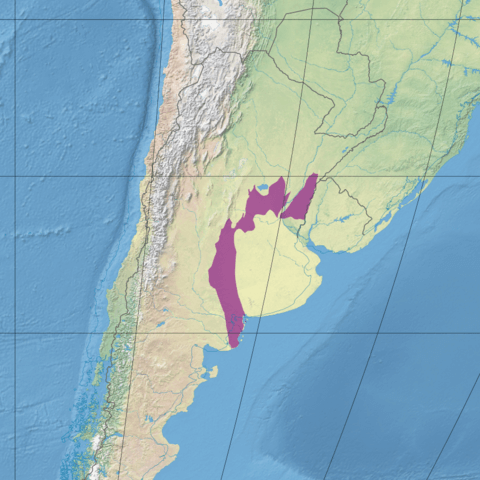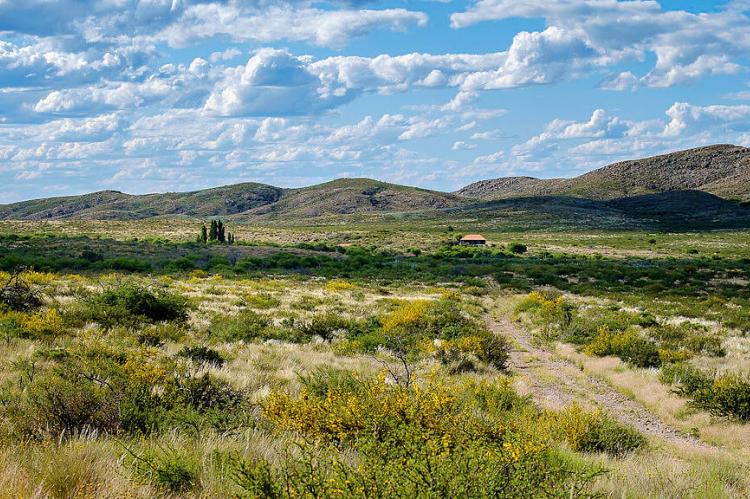Biodiversity in the Balance: The Argentine Espinal Ecoregion
Dry, thorny shrubland forests characterize the Argentine Espinal Ecoregion in central Argentina and serve as a transition between wetland ecosystems and mountainous terrain. Despite agricultural and cattle ranching alterations, remnants of native flora and fauna make the region ecologically significant.
Argentine Espinal Ecoregion: A Landscape of Thorny Forests and Grasslands
The Argentine Espinal Ecoregion is a unique and diverse ecosystem in central Argentina. It is characterized by its dry, thorny, and deciduous shrubland forests. The ecoregion stretches across a vast area, forming a natural transition between the wetland ecosystems along the Paraná River to the east and the mountainous Sierras de Córdoba to the west. Although much of the original landscape has been altered due to extensive cattle ranching and agriculture, remnants of the native flora and fauna persist, making the region ecologically significant.
Geographic Overview
The Espinal forms a broad arc of land in Argentina, extending from the northern border with Uruguay, west through Santa Fe and Córdoba, and south toward the Atlantic coast near Bahía Blanca. The ecoregion spans central Santa Fe Province, Córdoba Province, and the northern parts of San Luis Province. This vast area primarily comprises flat plains interspersed with low hilly areas. The soils are primarily silty, formed by wind-blown dust or sand accumulation.
The name "Espinal," meaning thorny, reflects the thorny deciduous forests that dominate the region. This vegetation is adapted to the region's dry conditions, with significant seasonal temperature variations and relatively high average precipitation.
Subregions of the Argentine Espinal
The Argentine Espinal can be divided into two distinct subregions, each with its characteristic vegetation and landscapes:
The Carob Subregion
The Carob Subregion is located in the northern part of the Espinal. It is characterized by its dominant tree species, which include algarrobo negro (Prosopis nigra) and algarrobo blanco (Prosopis alba), along with spiny hackberry (Celtis ehrenbergiana), chañar (Geoffroea decorticans), and espinillo (Acacia caven). In isolated areas, groves of caranday palms (Copernicia alba) can be found. The vegetation in this subregion is representative of dry, xerophytic forests that are well-adapted to the arid climate.
The Caldén Subregion
The Caldén Subregion, located in the southern part of the Espinal, is dominated by caldén trees (Prosopis caldenia), which form dense forests. This subregion is also home to grassy savannas, sandy dunes, and areas with saline soils supporting scrubland vegetation. The caldén forests, unique to this region, represent one of the few examples of native woodland that have not been entirely converted to pastureland or agriculture.
Flora and Fauna of the Argentine Espinal
Despite the extensive modification of the landscape, the Argentine Espinal still supports a variety of plant and animal species, many of which are adapted to its dry conditions.
Flora
The flora of the Espinal is primarily composed of xerophytic forests, savannas, and steppes. The vegetation is dominated by species from the Mimosoideae family, particularly the genera Prosopis (carob trees) and Acacia, which are highly adapted to arid environments. Other characteristic genera include Jodina, Celtis, Schinus, Geoffroea, and Atamisquea. Although relatively few species are endemic to the Espinal, the caldén tree (Prosopis caldenia) is an exception, almost exclusively confined to the ecoregion.
Fauna
The Argentine Espinal is home to many animal species, though few are endemic. Several endangered and rare species still inhabit the region, contributing to its ecological importance:
- Endemic Birds: The Espinal is home to three species of endemic birds—the yellow cardinal (Gubernatrix cristata), the Chaco eagle (Buteogallus coronatus), and the Eskimo curlew (Numenius borealis). These species are considered endangered due to habitat loss and other environmental pressures.
- Endangered Birds: The yellow cardinal and the Chaco eagle are endangered, while the Eskimo curlew is critically endangered, with populations having drastically declined.
- Other Bird Species: The Mar Chiquita Lake and the Dulce River swamps, which are designated as a Ramsar wetland, support a rich bird population. This wetland is a crucial breeding ground for neotropical birds, including the Chilean flamingo (Phoenicopterus chilensis), which forms large breeding colonies in the area.
- Mammals: Native mammal species include guanacos (Lama guanicoe), greater rheas (Rhea americana), and giant anteaters (Myrmecophaga tridactyla). These species and others face threats from habitat loss and human encroachment.
- Amphibians: One of the endangered amphibians in the Espinal is the blunt-headed salamander (Ambystoma amblycephalum), which has a limited range within the region.
Conservation Efforts and Protected Areas
The Argentine Espinal Ecoregion has been classified by the World Wildlife Fund (WWF) as "Critical/Endangered," highlighting the urgency for conservation efforts to protect its remaining biodiversity. Over the years, large portions of the ecoregion have been converted into agricultural land, particularly for cattle ranching, which has significantly altered the natural landscape.
Despite this, several conservation areas have been established to protect what remains of the Espinal's native flora and fauna. These include:
Lihué Calel National Park: Located in the southern part of the Espinal, this park protects a remnant of the caldén forests and the native wildlife that depends on it.
La Reforma University Reserve and Chacharramendi Provincial Reserve: These reserves focus on preserving Espinal's xerophytic forests and grasslands.
Luro Provincial Reserve: Known for protecting caldén forests, this reserve also serves as a refuge for endangered species like the yellow cardinal.
El Palmar National Park and Parque Atlántico Mar Chiquita: These parks play a crucial role in conserving the Espinal's bird populations, particularly in the Ramsar-designated wetlands of the Mar Chiquita lake and the Dulce River swamps.
Conclusion
The Argentine Espinal Ecoregion represents a critically endangered ecosystem that balances its natural heritage and human pressures. With its thorny deciduous forests, grassy savannas, and endemic species like the caldén tree, the Espinal is an important ecological region in Argentina. Although much of the region has been modified for agriculture and cattle ranching, significant efforts are being made to conserve its remaining natural habitats and protect endangered species such as the yellow cardinal and Chaco eagle. The establishment of protected areas like Lihué Calel National Park and the designation of Ramsar wetlands such as Mar Chiquita underscore the ongoing efforts to preserve this fragile ecoregion.

Map depicting the location of the Argentine Espinal (in purple).
